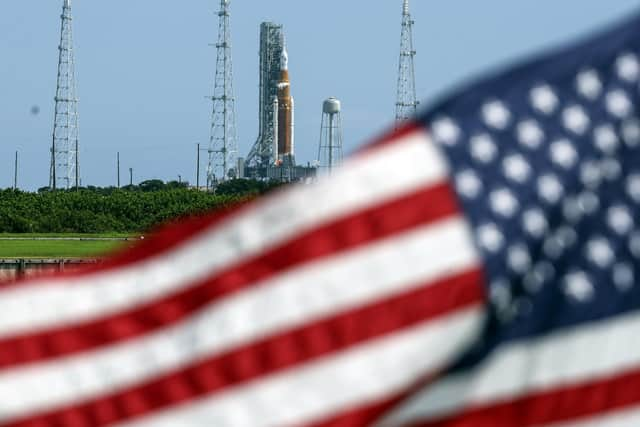Artemis rocket launch: Nasa flight now weeks away after dangerous fuel leak
The previous attempt at launching the 322-foot Space Launch System rocket, the most powerful built by Nasa, was also troubled by hydrogen leaks, though they were smaller. That was on top of leaks detected during countdown drills earlier in the year.
After the latest setback, mission managers decided to haul the rocket off the pad and into the hangar for further repairs and system updates. Some of the work and testing may be performed at the pad before the rocket is moved.
Advertisement
Hide AdAdvertisement
Hide Ad

Either way, several weeks of work will be needed, according to officials.
With a two-week launch blackout period looming in just a few days, the rocket is now grounded until late September or October. Nasa will work around a high-priority SpaceX astronaut flight to the International Space Station scheduled for early October.
Nasa administrator Bill Nelson stressed that safety was the top priority, especially on a test flight like this where everyone wanted to verify the rocket’s systems “before we put four humans up on the top of it”.
“Just remember – we’re not going to launch until it’s right,” he said.
Nasa already has been waiting years to send the crew capsule atop the rocket around the moon. If the six-week demo succeeds, astronauts could fly around the moon in 2024 and land on it in 2025.
People last walked on the moon 50 years ago.
Launch director Charlie Blackwell-Thompson and her team had barely started loading nearly one million gallons of fuel into the Space Launch System rocket at daybreak when the large leak cropped up in the engine section at the bottom.
Ground controllers tried to plug it the way they handled previous, smaller leaks, by stopping and restarting the flow of super-cold liquid hydrogen in hopes of closing the gap around a seal in the supply line.
They tried that twice and also flushed helium through the line. But the leak persisted.
Advertisement
Hide AdAdvertisement
Hide AdMs Blackwell-Thompson finally halted the countdown after three to four hours of futile efforts.
Mission manager Mike Sarafin said it was too early to tell what caused the leak, but it may have been due to inadvertent over-pressurisation of the hydrogen line earlier in the morning when someone sent commands to the wrong valve.
“This was not a manageable leak,” Mr Sarafin said, adding the escaping hydrogen exceeded flammability limits by two or three times.
Thousands of people who jammed the coast over the long Labour Day weekend, hoping to see the Space Launch System rocket soar, left disappointed.
The $4.1 billion (£3.5bn) test flight is the first step in Nasa’s Artemis program of renewed lunar exploration, named after the twin sister of Apollo in Greek mythology.
Years behind schedule and billions over budget, Artemis aims to establish a sustained human presence on the moon, with crews eventually spending weeks at a time there. It is considered a training ground for Mars.
Twelve astronauts walked on the moon during the Apollo program, the last time in 1972.
Comments
Want to join the conversation? Please or to comment on this article.
